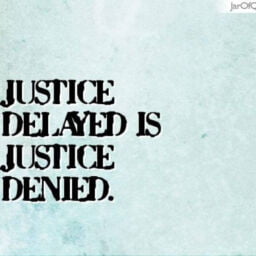INTRODUCTION
Hindu marriage act 1955, provide section 13 B (1) for the spouse to get the divorce by mutual consent. It is considered one of the best ways to get divorced because in the mutual consent divorce both the parties get agreed that they aren’t able to continue the relation so, it’s better to end the relationship. But when a party file application in front of the court for getting the divorce by mutual consent then a condition is given under section 13B (2) become a hurdle for them to wait for the cooling-off period which is six months before getting the final decree of divorce and this cooling-off period create agony between the spouses. So, the purpose of this article is to examine whether the cooling-off period given in section 13-B (2) is mandatory or waiving off this period can be possible, we will see it by analyzing the different cases.
MEANING OF MUTUAL CONSENT DIVORCE
Mutual divorce is a legal concept of separation of husband and wife from each other by their own will is known as mutual consent divorce[1]. Section 13B (1) of the Hindu Marriage Act, 1955, states the provisions relating to the conditions required for divorce by mutual consent.
The conditions, as well as a brief discussion, are as follows:
- Living separately
In this context, it should be noted that the phrase “living separately” does not always imply physical separation or living apart from marital obligations. Sureshta Devi v Om Prakash [2]was a landmark decision in which, the Supreme Court of India stated, “The expression living separately connotes not living like husband and wife. It makes no mention of where you live. Because of the circumstances, the parties may live under the same roof but not as husband and wife. What appears to be important is that they have no desire to fulfill marital obligations, and as a result, they have been living separately for a year before filling the petition’.”
- Not able to live together
Following the establishment of the first condition, it must be established before the honorable Court that the parties can’t cohabit. so, divorce must be permitted for the benefit of both parties, and that failure to grant the divorce will lead to much more animosity between the parties in the future., if I say in a different context then, there is no room for compromise or adjustment between the parties. The phrase “have not been able to live together” in Section 13B(1) of the HMA act, 1955 appears to imply the concept of a broken-down marriage with no hope of reconciliation.
- Mutually agreed to get a divorce
After the preceding conditions have been met, both parties must have mutually agreed to dissolve the marriage. It is also required that both parties’ consent be free, i.e. not obtained through fraud, coercion, misrepresentation, and undue influence. . Furthermore, it is required that both parties be present during the divorce procedure, However, In Ramola Mander v. Charanjit Singh Mander[3], Court observed that, if the parties are unable to appear due to unforeseen circumstances, the trial court may grant the opportunity to appear to complete the procedure of dissolution of marriage.
COOLING- OFF PERIOD
Section 13- B (2) of the HMA act 1955, states about the cooling-off period. It is the six-month time period that is given to the parties between the first and last motion of divorce by mutual consent just for the purpose the party can rethink the decision of getting a divorce.
Judicial approach towards cooling-off period:
In Grandhi Venkata Chitti Abbal[4], it was held by the court that the waiting period of six months is given under section 13B(2) is essential otherwise there will be no use of this section. In Dinesh Kumar Shukla vs. Neeta[5], the situation was similar. The period, however, can be reduced from six months at the court’s discretion.
In Amardeep Singh v. Harveen Kaur,[6] the court stated that the provision of the Hindu Marriage Act requiring the six-month cooling-off period is only advisory and not mandatory. As a result, in exceptional circumstances, the family court in which divorce proceedings are pending may waive this period. If certain conditions are fulfilled like parties have lived separated more than 18 months, every effort has got failed to make them unite, and the parties have genuinely settled their differences, including alimony, child custody, and so on, and the waiting period would only prolong their agony. As a result, the Supreme Court has granted family courts discretion over whether to waive the six-month cooling-off period. The Supreme Court also ruled that an application for a waiver can be made as soon as one week after the divorce petition is filed.
In Ashok Hurra v Rupa Ashok[7], while pronouncing the judgment, the supreme court has used its sole power that is given under article 142 of the constitution and waived off the cooling period. because of that, parties can get relief from the pain and agony that they may suffer during the cooling period according to the recommendation of the 71st law commission of India. the supreme court of India has the sole power to exercised article 142 of the constitution in the case of irretrievable breakdown of the marriage.
In the case of Pankaj Rajput vs Smt. Kirti Rajput[8] taking into account the fact that there has been a dispute between the parties for a long time, and now the parties have amicably settled the matter and decided to live separately, and there are no chances of any settlement between them, the cooling period of six months as provided under Section 13-B of the HMA is waived off. From the above discussion, it is clear that the cooling-off period (six months) can be waived by the courts under some situations, but it will depend on case to case.
CONCLUSION
A mutual consent divorce is a way through which two-person get separated from martial obligation when there is no love, affection between them. In this situation, if judiciary will impose an extra six-month period on them to think about the reconciliation of their relationship. Then this only is a result of increasing agony between them. The elimination of the cooling period will benefit society and that will decrease the suffering and agony between the partners that may be suffered due to the waiting of the cooling period.
Author(s) Name: Anamika Dinkar (National University of Study and Research in Law, Ranchi)
References:
[1] Rathi D, “How to File for Divorce by Mutual Consent in India? by: Divyansh Rathi” (Latest LawsMarch 30, 2020) <https://www.latestlaws.com/articles/how-to-file-for-divorce-by-mutual-consent-in-india-by-divyansh-rathi/> accessed January 22, 2022
[2] AIR 1992 SC 1904.
[3] 2015 (3) Law Herald 2556
[4] AIR 1999 AP 91.
[5] I (1995) DMC 640
[6] AIR 1999 AP 91
[7] AIR 2002 SC 1771.
[8] 2021 SCC OnLine MP 1858
















